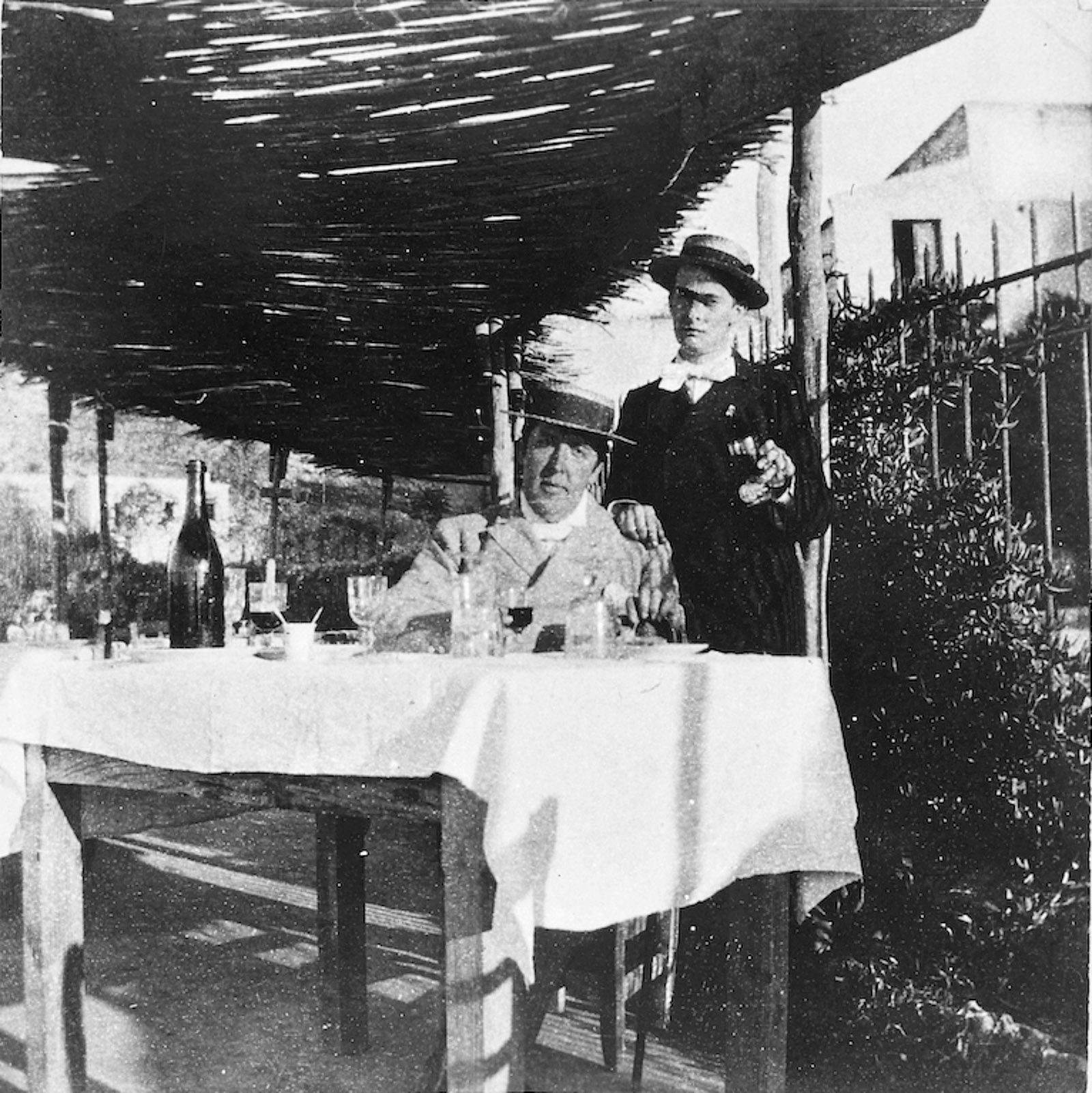The exterior of Reading Prison in Berkshire, formerly known as Reading Gaol, where Oscar Wilde spent almost two years in confinement between 1895 and 1897, is impressive in a grandiose Victorian, mock-Medieval-Tudor-Gothic way. Designed by George Gilbert Scott and William Moffatt in the 1840s, the prison was made to look like a grand fortress inspired by Warwick Castle, built in the eleventh century.
When Wilde was a prisoner there, as punishment for having had sex with men (“gross public indecency”), Reading Gaol was still run according to the then-modern principles pioneered at Eastern Penitentiary in Philadelphia. Inmates were locked up for twenty-three hours a day in complete solitary confinement. Even when exercising in the yard or attending services in the chapel, they were isolated from one another in boxes and made to wear hoods. Strict silence was enforced. The guards covered their shoes in felt to make sure every sign of life was muffled. Designed to make criminals reflect and repent, this regime in fact drove many of them insane.
Gilbert Scott was known for his Gothic Revival style in churches and cathedrals. Providing an aesthetically pleasing façade to a place of harsh punishment might seem like an odd perversity, also seen in some Nazi concentration camps: the words on the gate of Buchenwald, Jedem das Seine (To each his own), were designed by a prisoner named Franz Ehrlich, a Bauhaus architect and designer. But these Nazi embellishments were a form of sarcasm to torment their victims further. This was surely not the intention of Scott and Moffatt. Victorian prisons, like railway stations (another Scott specialty), were designed to project the power of civic institutions.
The artistic concept behind “Inside,” the art and literature exhibition inside Reading Prison, is neither pompous nor of course mocking, but a mournful celebration of Wilde and an aesthetic protest against human cruelty and bigotry. Prison destroyed Wilde’s life. The show is a kind of redemption.
Artworks are displayed inside the cells of the building, which was still a functioning prison until 2013. They range from Nan Goldin’s photographs of a young gay German man to an art installation by Steve McQueen meant to convey colonial oppression. A gold-plated mosquito net draped over a bunk bed is explained in the helpful guide as a token of spiritual escape from a confined space. There are texts and recorded readings by the Chinese artist Ai Weiwei, the Kenyan writer Binyavanga Wainaina, the novelist Gillian Slovo, and others. And there are public readings every Sunday by different people of De Profundis, written by Wilde in the last months of his incarceration in this terrifying place.
It was the turn of Ralph Fiennes to read on the day I attended. Dressed simply in blue denim, Fiennes read in a modest, dignified manner that brought out the best in the sometimes histrionic and deeply religious document. De Profundis is a strange essay, composed as a letter to Wilde’s rather odious lover Lord Alfred Douglas (“Bosie”). It had to take that form, because prisoners were only allowed to write letters. Although marred by self-pity and self-aggrandizing passages comparing the tormented artist to Jesus Christ, it was nonetheless deeply moving to hear Wilde’s words read out loud in the former chapel of the prison where he suffered so much.
Wilde was in fact already a broken man when he arrived in Reading in 1895. The worst time of his imprisonment came in the first few months in London, first in Pentonville and then Wandsworth prison. Sleepless nights on a wooden plank, awful sanitary conditions, and barely edible food wrecked his health. He lost twenty-eight pounds in three months. And months of isolation, with nothing but the Bible to read, and the forced task of picking tar from used rope, which left his fingers blackened and bloody, drove him half mad. While being transferred to Reading, Wilde, shackled and dressed in prison garb, was spat upon at Clapham Common station when he was recognized by a jeering mob.
The governor of Reading Gaol for the first eight months of his time there was Henry B. Isaacson, described by Wilde as a “mulberry-faced dictator” and a “bloated Jew.” Not actually Jewish at all, despite the name, Isaacson did at least absolve Wilde from hard labor, for which he was deemed unfit. Isaacson’s successor, Major J.O. Nelson, was less of a martinet, and allowed Wilde, who was put in charge of the prison library, to receive books from outside. Some of the titles are displayed in the current show, among them Christian histories, Walter Pater’s essays on art, Saint Augustine’s Confessions, and poetry by Dante, Wordsworth, and Keats.
Advertisement
Wilde’s old prison cell, C.2.2, is like all the others that line the three tiers of Reading Prison: small and narrow with cream brick walls, a steel toilet bowl, and two bunk beds. The barred window is too high to see anything but what Wilde later described in “The Ballad of Reading Gaol” as that “little tent of blue/we prisoners called the sky.” There is no art in C.2.2., just a small bouquet of dried flowers on the metal table fastened to the wall.
The artworks in the other cells are of varying quality. Among the strongest displays are a video by Wolfgang Tillmans of the outside seen through a prison window and distorted self-portraits reflected in a dark mirror inside a prison cell. Paintings of Wilde, Bosie, and Jean Genet by Marlene Dumas are unremarkable. Nan Goldin’s photographs and edited film clips of an old production of Wilde’s Salome are interesting. And Robert Gober’s sculptures of a man’s suit and a woman’s torso opening up to show images of water are very fine.
But none of these works is quite as moving as the written words, Wilde’s own of course, but also those of Ai, Slovo, Wainaina, Tahmima Anam, and others, echoing De Profundis in various personal ways. In a letter to his two-year-old son, Ai describes in chilling detail his own imprisonment in China. Wainana has written a letter to his deceased mother about coming out as a gay man in Kenya, where homosexuality is still a crime. Slovo’s letter is addressed to her mother, who was murdered by the South African secret service.
For me, however, even these extraordinary letters were less poignant than the fragments of graffiti and other marks of life left behind in the cells by recent inmates. A sign can still be seen outside one cell that reads, in prison langue de bois: “Occupants are to be placed on report if graffitti [sic] has occurred during occupation.” Nonetheless, among some obscene texts, there remain flashes of real wit on the walls. One former inmate scribbled the words “room service” next to the bell installed to call a guard. There are pathetic diaries marking lost time. Little has changed since Wilde wrote: “And that each day is like a year,/a year whose days are long.”
Then there are the dried bits of toothpaste once used to glue pictures to the thick stone walls. Prison authorities did their very best to erase all this (just one series of pinups stuck under a shelf seems to have been overlooked). But that makes these small tokens all the more affecting. The walls are like a palimpsest; human presence can never be erased entirely.
Indeed, if I came away from the show with one overriding impression, it was that the prison itself revealed the limits of conceptual art. The artistic images are fine. But the photographs of nineteenth-century prisoners, including some terrified-looking children, holding up their hands blackened by the tar and bituman they had to pick from ropes, seemed to me infinitely stronger.
Oscar Wilde, incidentally, showed his humanity by protesting about the treatment of these half-starved children, one of them arrested for poaching a rabbit, after a guard was fired for offering sweet biscuits to a hungry child. The only reason there is no photo of Wilde himself is that he was no longer considered a danger to society, and so there was no need for his image to be recorded.
In a way, the prison is the chief exhibit in this fascinating show. Behind the readers of De Profundis in the old chapel stands an art installation by the French artist Jean-Michel Pancin. The exact contours of Wilde’s cell are poured in concrete with the original white door placed in front. But actually being in the real cell was, to me, a more intense experience than seeing this installation. You cannot feel what Wilde must have felt, but his words resonate more deeply:
Each narrow cell in which we dwel
Is a foul and dark latrine,
And the fetid breath of living Death
Chokes up each grated screen,
And all, but Lust, is turned to dust
In Humanity’s machine.




